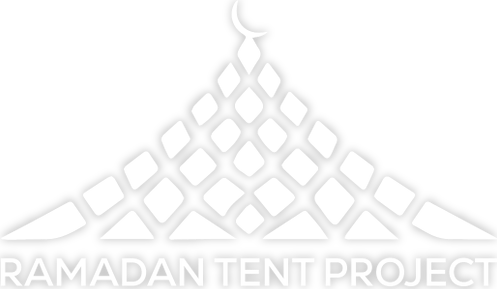Since childhood, I have always associated tents with camping outdoors, under the stars, snuggled up inside a sleeping bag. While I have actually never been camping, I do remember putting bed covers over a washing line to resemble a makeshift tent in the garden. There is something about being under a tent, this ephemeral architectural structure, which makes me feel secure and protected from the outside world.
However, the history of tents goes far beyond the mainstream understanding of what they symbolise. In fact, they have invariably been an integral part of the Islamic world. From the Bedouin tribes use of tents as portable homes, to their modern transformation into what is now called a ‘kheima’ restaurant. Tents can be homes, convey a message of authority and provide a unifying space to have iftar, all at the same time.
A Brief History
For the Ottoman sultans, tents were an extension of the palatial complex. They were assembled for outside festivities, celebrations and military campaigns. To think these ostentatious tents were like the more practical tents we have today would be a complete misconception. They were magnificent — just like Sultan Suleyman himself! They were designed to not only fit the sultan himself, but his whole entourage; from his harem to senior officials.
Since very few of these historical tents exist today, most of our evidence is found in painted miniatures like the one shown below. The miniature depicts a scene from the Siege of Vienna in 1529, where Sultan Suleyman orchestrated an attempt to capture the city. Interestingly, even during military confrontations, the tents were purposefully embellished with typical Ottoman floral motifs and rich silks in order to assert the Ottoman imperial presence.
However, during my time at university, I studied the uses of Ottoman textiles and came to the conclusion that tents were not unique to the early modern Islamic world, but actually extended further west. I think it is safe to assume that almost everyone is aware of the Tudor dynasty (1485-1603) — particularly the infamous King Henry VIII! I would like to point out that Henry was not too different from his Ottoman counterparts in the East. In fact, a diplomatic meeting between King Francis I of France, and Henry VIII in 1520 is known as the Field of the Cloth of Gold; a nod to the fact that the luxurious tents that were constructed to host the King were woven with gold thread.
Modern Tents
From the early modern period to present day, it is almost assumed that if you visit Dubai for a holiday, you have to experience the traditional Bedouin way of life. On Facebook, I have scrolled through many photos of jeeps traversing the golden desert, followed by a traditional feast in a Bedouin tent. It seems that tents in the Middle East have now become a space for orientalist adventures. With their low drooping roofs and decorative cushions scattered across the floor, Bedouin culture has been romanticised to fit our imagination of what a nomadic lifestyle supposedly is. While these excursions offer tourists a chance to immerse themselves in something that is utterly different to their own cultural practices, it has been pointed out that companies tend to charge high prices for something that does not entirely reflect the history of the Bedouin lifestyle.
Recently there has been a proliferation of ‘kheima’ restaurants. I first encountered one of these restaurants during a trip to Algeria. Initially, when I was told there was a large tent in the desert that serves traditional food, I immediately thought “Well… this is going to be a long car journey!” In actuality, the journey lasted nothing more than ten minutes from my family home.
I was surprised to see that from the outside the restaurant looked like all the other Algerian restaurants. There was a regular doorway with reflective windows to stop others from seeing the inside. But as soon as I stepped inside, I felt immediately transported into the middle of the Sahara — albeit an air-conditioned Sahara! Draped around me were traditionally decorated pieces of striped cloth, surrounding our low cushioned seating. I remember thinking that it was such an innovative idea. While it may be a clever business move, in my opinion it also stresses the importance of tents in Muslim culture, and the need to preserve these traditions.
Ramadan Tent Project’s Open Iftar
Every year before Ramadan commences, our tent is assembled at Malet Street Gardens marking the beginning of the annual Open Iftar. Admittedly, I was not aware of the profound symbolism of the Ramadan Tent logo up until now that is. The twenty-nine shapes the twenty-nine days of the month of Ramadan. While the crescent — which is placed above the asymmetric shapes — symbolises the start and end of Ramadan, giving us a total of thirty days. Not to mention, that the tent’s seven layers signify the seven heavens mentioned in the Qur’an (see Quran 17:44, 65:12, 71:15).
For me the marquee at the Open Iftar not only provides a space for all people, from various backgrounds and faiths, to come together and join in the act of breaking one’s daily fast, but also epitomises the strength and unity of communities during periods of division and uncertainty. Seeing the tent in Malet Gardens constantly reminds me that Ramadan is a period of togetherness and compassion for those less fortunate than yourself.
Happy Ramadan 2017!


